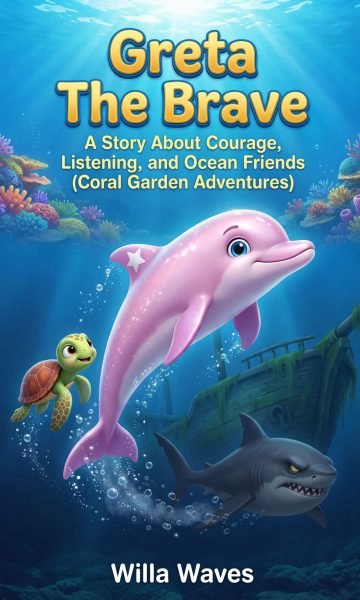Bringing home a new dog is one of life’s most heartwarming moments — full of excitement, wagging tails, and new beginnings. But the first week with a new dog is also one of the most critical times for building trust, setting routines, and helping your furry friend feel safe in their new environment.
In this guide, you’ll learn exactly what to expect, what to prepare, and how to make your new companion’s transition as calm and joyful as possible.
Preparing Your Home Before Bringing a New Dog Home
Before your new dog sets paw inside your home, a little preparation goes a long way.
Essential Supplies You’ll Need
Make sure you have these basics ready:
- Food and water bowls
- Collar and leash with ID tags
- Comfortable dog bed or crate
- Nutritious dog food
- Calming aids like sprays or chews (optional but helpful for anxious pups)
- Grooming tools and waste bags
Having these items ready helps your new dog settle in faster and prevents last-minute stress.
Create a Safe and Comfortable Space
Set up a quiet area where your dog can relax — preferably away from loud noises or heavy foot traffic. This will become their “safe zone,” especially during the first few nights.
Pet-Proof Your Home
Hide electrical cords, remove toxic plants, secure trash bins, and keep shoes out of reach. Dogs, especially curious new ones, love to explore — and chew!
The First 24 Hours With Your New Dog

Your dog’s first day in a new home can feel overwhelming. Expect nervousness, pacing, or even refusal to eat — this is completely normal.
What to Expect on the First Day
Avoid inviting too many guests or introducing multiple pets at once. Let your dog sniff around at their own pace and explore the new environment slowly.
Establish a Routine Early
Dogs thrive on consistency. Begin setting a routine for meals, potty breaks, walks, and bedtime right away. Predictable schedules reduce anxiety and help them settle in quickly.
Introducing the Crate or Sleeping Area
A crate can be a wonderful tool for comfort and safety if introduced properly. Keep the crate open, cozy with blankets, and reward your dog when they choose to rest inside.
Feeding and Nutrition During the First Week

Feeding is more than just giving food — it’s part of helping your dog feel secure.
Stick to Their Current Diet
If possible, continue the same food the dog was eating before adoption. A sudden change can upset their stomach. Transition gradually over 7–10 days if switching brands.
Healthy Treats and Supplements
Use treats as training rewards, not bribes. You can also introduce calming chews for dogs to ease stress during this adjustment phase.
Hydration and Mealtime Routine
Always keep clean water available. Feed your dog in the same place and at the same time each day — routine builds trust.
Training Basics for the First Week

Start Simple
Begin with easy commands like sit, stay, and come. Use positive reinforcement — treats, praise, and affection work wonders.
Potty Training
Take your dog outside frequently — especially after meals, naps, or playtime. Praise them enthusiastically for doing their business in the right spot.
Leash Manners and Socialization
Keep early walks short and calm. Avoid crowded places during the first week. Focus on confidence, not performance.
Building Trust and Bonding With Your Dog
Spend Quiet, Quality Time
Sit near your dog, speak softly, and let them come to you. Patience and presence are your best tools in the first week.
Positive Reinforcement Only
Reward calm behavior and good manners. Never punish mistakes — it creates fear and confusion.
Learn to Read Body Language
A wagging tail doesn’t always mean happiness. Look for relaxed posture, soft eyes, and a wagging tail at mid-level for signs of comfort.
Health and Vet Care

Schedule a Vet Appointment
Book a vet visit within the first week for a checkup, vaccinations, and microchip confirmation.
Bring All Available Records
If you adopted from a shelter or breeder, bring vaccination papers or medical history to your appointment.
Watch for Warning Signs
If your dog isn’t eating, seems lethargic, or has digestive issues, consult your vet immediately.
Helping Your New Dog Feel Calm and Secure
Use Calming Aids
If your dog shows signs of anxiety, tools like calming sprays, pheromone diffusers, or anxiety collars can make a big difference.
Maintain Routine
Feed, walk, and rest your dog at the same times daily. Predictability helps reduce stress.
Quiet Time Is Important
Avoid overstimulation — even positive attention can be too much in the first few days.
❌ Common Mistakes to Avoid
- Giving too much freedom too soon
- Inconsistent training or feeding
- Overstimulating your dog with visitors
- Ignoring signs of stress (tucked tail, hiding, growling)
Remember: structure, patience, and empathy are key to a smooth transition.
Related Articles
- Top 10 Best Small Dog House Reviews for 2026 (Updated Guide)
- Top 10 Best Dog Grooming Harness Reviews (Updated Guide)
- Top 10 Best Nebulizer Machines for Dogs Reviews
- Top 10 Best Automatic Dog Waterer Outdoor Reviews
- Top 10 Best Outdoor Dog Kennel Reviews (Updated Guide & Tips)
- Human-Grade Dog Food (2026): Benefits, Costs & Top 10 Brands
How to Introduce Your New Dog to Family Members

Bringing your new dog into a home with people (and possibly other pets) requires calm, intentional introductions.
Introducing to Adults and Children
When introducing your dog to adults or older family members, allow the dog to approach at their own pace. Avoid rushing interactions or crowding the dog. Use a calm voice and gentle movements.
If you have children:
- Teach them to stay low and avoid sudden movements.
- Show them how to pet gently on the chest or side — never over the head.
- Supervise all interactions during the first few days.
Dogs need time to learn that every family member is safe and loving.
Introducing to Other Pets
If you have another dog or cat, plan a neutral first meeting outdoors or in a large room. Keep leashes loose and monitor their body language.
- Avoid face-to-face confrontations at first.
- Keep introductions short, positive, and reward calm behavior.
- Gradually increase their time together over several days.
Never leave them unsupervised until you’re confident they’re comfortable with one another.
Establishing Routines and Boundaries
Dogs thrive on structure. The first week is your opportunity to show your new pet what’s expected — with consistency and kindness.
Set Clear Daily Routines
Feed, walk, and play at the same times each day. Predictability helps your dog feel secure. A structured schedule also reduces anxiety, especially in rescue dogs.
Sample daily schedule:
- 🕖 7:00 AM: Morning walk & potty break
- 🕗 8:00 AM: Breakfast time
- 🕛 12:00 PM: Short play session or potty break
- 🕔 5:30 PM: Evening walk
- 🕕 6:00 PM: Dinner
- 🕙 10:00 PM: Final potty break & quiet time
Introduce Boundaries Early
Decide from day one where your dog can and cannot go — for example, furniture, bedroom, or kitchen areas.
Use baby gates or closed doors instead of punishment. Boundaries, when paired with routine, create balance and trust.
Building Confidence Through Play and Training

Play isn’t just fun — it’s an essential part of bonding and reducing anxiety during the first week.
Gentle Play Builds Trust
Start with low-energy games like tug of war, gentle fetch, or find the treat. These activities help your dog release tension and begin associating you with joy and safety.
Use Positive Reinforcement Only
Reward calm and curious behavior with praise, treats, or belly rubs. Avoid yelling or physical corrections — they can undo trust.
Combine Play With Learning
Training during play keeps your dog mentally stimulated. Teach simple cues like sit, come, or leave it. Always end sessions on a positive note.
Nighttime Routine for a Calm First Week

Your dog’s first few nights might involve some whining or restlessness — that’s perfectly normal.
Where Should Your Dog Sleep?
For the first week, place your dog’s bed or crate near your room. Being close helps them feel secure and reduces nighttime anxiety.
If your dog whines, gently reassure them — but avoid bringing them into bed if that’s not part of your long-term plan.
Comfort and Consistency
Keep nighttime calm:
- Dim lights early.
- Offer a bedtime potty break.
- Use calming aids (diffuser, pheromone collar, or calming chews for dogs before bedtime).
A consistent nighttime routine helps your dog learn when it’s time to rest.
Reading Your Dog’s Emotions During the First Week
Dogs communicate primarily through body language, and understanding it can prevent stress or misunderstandings.
Signs Your Dog Is Relaxed
- Soft eyes and slow blinks
- Tail wagging gently at mid-level
- Loose, wiggly body
- Curious sniffing and exploring
Signs of Anxiety or Fear
- Tucked tail
- Avoidance or hiding
- Panting, trembling, or pacing
- Excessive licking or yawning
If you see these signs, give your dog space and quiet time. Encourage calmness with soft tones and gentle reassurance — not forced affection.
When to Seek Professional Help
Not every new dog adjusts easily. Some need extra support.
When to Contact a Vet
If your dog shows extreme fear, refuses to eat for over two days, or has persistent digestive issues, consult your vet.
When to Hire a Trainer or Behaviorist
If you notice aggressive tendencies, severe anxiety, or obsessive behaviors (like tail chasing), a certified dog trainer or behaviorist can help guide you through positive behavior modification.
Long-Term Success After the First Week
By the end of the first week, your goal isn’t perfection — it’s progress.
What Success Looks Like
✅ Your dog recognizes your voice and daily routine.
✅ You’ve established potty habits and boundaries.
✅ Your dog starts showing affection and playfulness.
Consistency is your secret weapon. Keep up the love, structure, and calm energy, and your dog will blossom in the weeks ahead.
❤️ Final Verdict – Making the First Week Count
Your first week with a new dog is about building trust, patience, and consistency.
With structure and love, your pup will quickly learn that your home is their safe haven.
Stay calm, maintain routines, and celebrate small wins. Before long, you’ll see your new dog’s true personality shine through.
Conclusion
The first week with a new dog isn’t about perfection — it’s about connection.
Stay patient, positive, and kind. Within days, you’ll have a loyal companion who feels right at home.
FAQs – The First Week With a New Dog
How long does it take a new dog to adjust to a new home?
Most dogs take 3–4 weeks to fully settle in, but the first 7 days are crucial for building trust.
Should I let my new dog sleep in my bed?
Not during the first week. Start with a consistent sleeping space to establish boundaries and comfort.
What if my dog doesn’t eat at first?
Mild appetite loss is common. Keep offering food calmly — don’t pressure. Consult a vet if it lasts more than 48 hours.
When should I start training?
Right away! Even on day one, start reinforcing good behavior gently.
How can I tell if my dog is stressed?
Look for excessive panting, trembling, hiding, or avoidance. Offer calm reassurance and quiet time.






